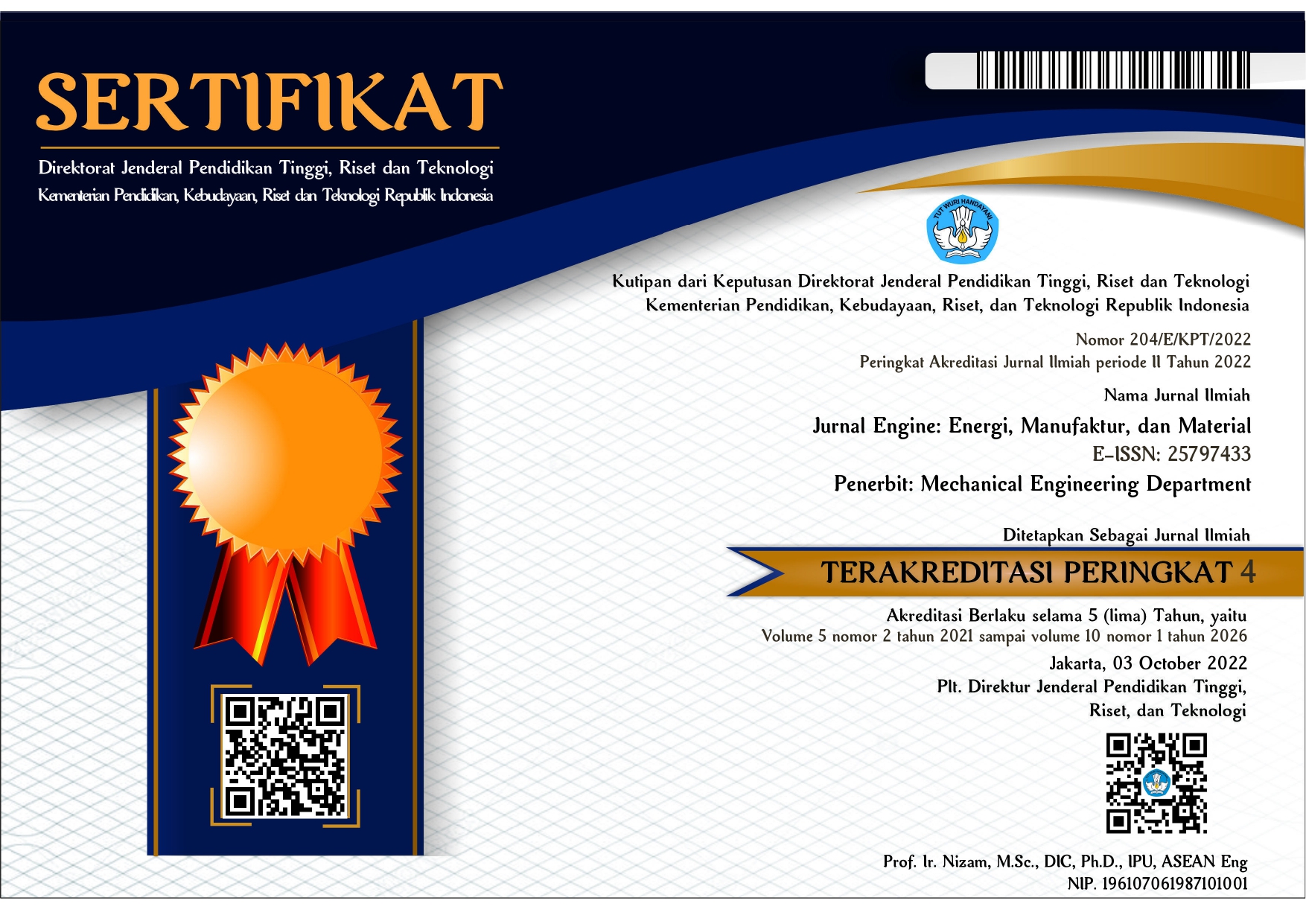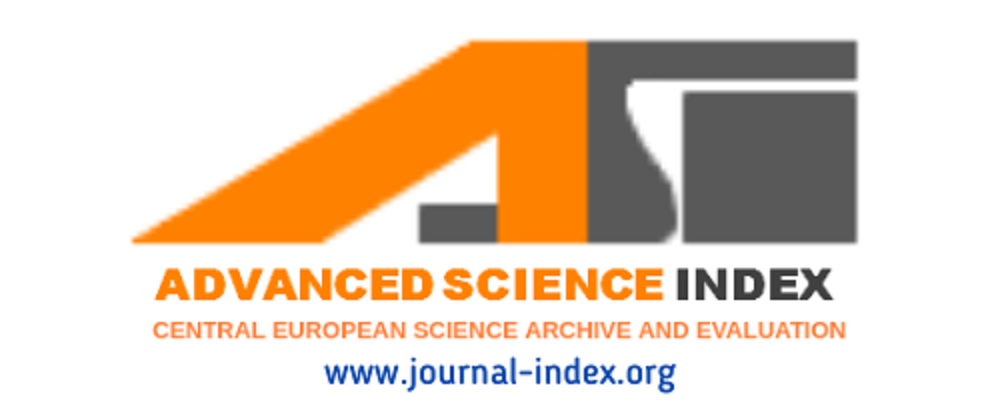Tinjauan Potensi dan Kebijakan Energi Surya di Indonesia
(1) Universitas Riau
(2) Universitas Riau
(*) Corresponding Author
Abstract
The need for electrical energy in Indonesia is always increasing from year to year. The State Electricity Company in Indonesia (PLN), said that the national electricity demand in 2018 was 232,296 TWh and will increase 5.1% every year. However, energy sources are still dominated by coal and fossil fuels at 59.6%. The potential for renewable energy from solar energy is currently not widely used, even though the potential for renewable energy is very large, especially in Indonesia. This paper purpose to provide information about the potential of solar energy that can be utilized especially as a power plant and the policies and constraints of solar power plants in Indonesia. Indonesia has a fairly stable distribution of solar radiation throughout the year. The government has targeted the installed capacity of solar energy for power plant to reach 0.87 GW by 2025. Realization of Solar Power Plants (PLTS) in 2020 reached 0.15 GWp from the potential of solar energy in Indonesia of 207.8 GWp. Researchers, academics, and the government also continue to develop and innovate of solar energy technology in Indonesia and are expected to maximize the use of Renewable Energy. Some of the obstacles experienced are the high investment costs that must be incurred, causing the price of electricity produced from renewable energy to become uneconomical.
Keywords
Full Text:
PDFReferences
Ab Kadir, M. Z. A., & Rafeeu, Y. (2010). A review on factors for maximizing solar fraction under wet climate environment in Malaysia. Renewable and Sustainable Energy Reviews, 14(8), 2243–2248.
Aprilianti, K. P., Baghta, N. A., Aryani, D. R., Jufri, F. H., & Utomo, A. R. (2020). Potential assessment of solar power plant: A case study of a small island in Eastern Indonesia. IOP Conference Series: Earth and Environmental Science, 599(1).
Burke, P. J., Widnyana, J., Anjum, Z., Aisbett, E., Resosudarmo, B., & Baldwin, K. G. H. (2019). Overcoming barriers to solar and wind energy adoption in two Asian giants: India and Indonesia. Energy Policy, 132, 1216–1228.
Chico Hermanu, B. A., Santoso, B., Suyitno, & Wicaksono, F. X. R. (2019). Design of 1 MWp floating solar photovoltaic (FSPV) power plant in Indonesia. AIP
Dang, M. (2018). Potential of Solar Energy in Indonesia. April.
Fathoni, A. M., Utama, N. A., & Kristianto, M. A. (2014). A Technical and Economic Potential of Solar Energy Application with Feed-in Tariff Policy in Indonesia. Procedia Environmental Sciences, 20, 89–96.
Handayani, N. A., Diponegoro, U., Ariyanti, D., & Diponegoro, U. (2015). Potency of Solar Energy Applications in Indonesia. April.
Hardianto. (2019). Utilization of Solar Power Plant in Indonesia: A Review. International Journal of Environment, Engineering and Education, 1(3), 1–8.
Hasan, M. H., Mahlia, T. M. I., & Nur, H. (2012). A review on energy scenario and sustainable energy in Indonesia. Renewable and Sustainable Energy Reviews, 16(4), 2316–2328.
Klass, D. L. (1998). Biomass for Renewable Energy, Fuels, and Chemicals. Elsevier Science.
Kurniawan, I. A. (2016). Tenaga Surya ( Plts ) Sebagai Pemanfaatan Solar Potential Analysis As Steam Power Plant ( Paiton ) Area. 1–99.
Martin, A., Wahab, H., & Barbarosa, M. (2021). Coalbed Methane As a New Source of Energy in Indonesia and Some Developed Countries; A Review. Journal of Ocean, Mechanical and Aerospace -Science and Engineering- (JOMAse), 65(2), 40–60.
Mekhilef, S., Saidur, R., & Safari, A. (2011). A review on solar energy use in industries. Renewable and Sustainable Energy Reviews, 15(4), 1777–1790.
Pemerintahan Republik Indonesia. (2010). Naskah Akademis Rencana Aksi Nasional Penurunan Emisi Gas Rumah Kaca. Peraturan Presiden, 1–162.
Pikra, G., Salim, A., Prawara, B., Purwanto, A. J., Admono, T., & Eddy, Z. (2013). Development of small scale concentrated solar power plant using organic Rankine cycle for isolated region in Indonesia. Energy Procedia, 32, 122–128.
PLN (Persero). (2019). Rencana Usaha Penyediaan Tenaga Listrik PT PLN (Persero) 2019-2028. 2019–2028.
Pribadi, A. (2020). Menengok Ladang Panel Surya Terbesar di Indonesia. Ebtke.Esdm.Go.Id.
Rante, J. C., Patras, A., & Rompis, L. (2019). Design of a Solar Micro Power Plant for Home Lighting. Proceedings of 2018 International Conference on Electrical Engineering and Computer Science, ICECOS 2018, 17, 453–456.
Ridwan, A., Hafizh, H., & Fauzi, M. R. (2018). Design and experimental test for solar chimney power plant: Case study in Riau Province, Indonesia. IOP Conference Series: Materials Science and Engineering, 403(1).
Rumbayan, M., Abudureyimu, A., & Nagasaka, K. (2012). Mapping of solar energy potential in Indonesia using artificial neural network and geographical information system. Renewable and Sustainable Energy Reviews, 16(3), 1437–1449.
Setiawan, A. (2017). Optimization of a Photovoltaic Power Plant in Indonesia with Proper Tilt Angle and Photovoltaic Type using a System Advisor Model. April.
Setyawati, D. (2020). Analysis of perceptions towards the rooftop photovoltaic solar system policy in Indonesia. Energy Policy, 144, 111569.
Sugiawan, Y., & Managi, S. (2016). The environmental Kuznets curve in Indonesia : Exploring the potential of renewable energy. Energy Policy, 98, 187–198.
Syahputra, R. (2020). Planning of Hybrid Micro-Hydro and Solar Photovoltaic Systems for Rural Areas of Central Java , Indonesia. 2020.
DOI: https://doi.org/10.30588/jeemm.v6i1.997
Article Metrics
Abstract view : 2794 timesPDF - 282 times
Refbacks
- There are currently no refbacks.
Copyright (c) 2022 Faisal Afif

This work is licensed under a Creative Commons Attribution 4.0 International License.

Jurnal Engine: Energi, Manufaktur, dan Material is licensed under a Creative Commons Attribution 4.0 International License.




.jpg)


















